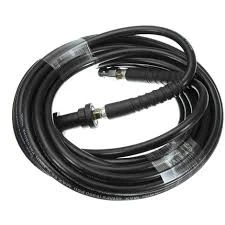pipe couplings and clamps
Understanding Pipe Couplings and Clamps Essential Components for Effective Piping Systems
In the world of plumbing and mechanical engineering, pipe couplings and clamps are crucial components that ensure the effective functioning of piping systems. These components serve various critical roles, from connecting different sections of piping to providing stability and support under diverse environmental conditions.
Pipe Couplings Connecting Piping Systems
Pipe couplings are fittings used to connect two lengths of pipe, facilitating a seamless flow of fluids within a system. They come in various types, including slip couplings, threaded couplings, and welded couplings, each designed for specific applications. Slip couplings allow for easy adjustments in pipe length, making them ideal for temporary connections or minor repairs. Threaded couplings, on the other hand, provide a secure and tight fit, making them suitable for high-pressure applications.
Moreover, welded couplings are utilized in situations where a permanent bond is necessary. This method is common in industries where safety and integrity of the piping system are paramount, such as in oil and gas pipelines. The choice of coupling depends on various factors including the type of fluid being transported, pressure levels, and the environment in which the piping system operates.
Clamps Providing Support and Stability
pipe couplings and clamps

Clamps complement couplings by providing additional support and stability to piping systems. They are designed to hold pipes securely in place, preventing movement and reducing the stress on joints and connections. This is particularly important in systems subject to vibration or thermal expansion, where pipes may shift or become misaligned.
There are several types of clamps, including pipe clamps, U-bolts, and saddle clamps, each serving specific purposes. Pipe clamps are widely used in residential and commercial plumbing, while U-bolts are often employed in outdoor applications where additional stability is required. Saddle clamps are particularly useful for securing pipes to walls or ceilings, minimizing the risk of damage due to sagging or bending.
Choosing the Right Components
When selecting pipe couplings and clamps, it is essential to consider the material of the pipes, the environment in which they will be installed, and the type of fluid being conveyed. Materials such as PVC, stainless steel, and galvanized steel are commonly used, each offering specific benefits regarding corrosion resistance and durability.
In conclusion, understanding the roles and applications of pipe couplings and clamps is vital for anyone involved in the design, installation, or maintenance of piping systems. By choosing the right components, engineers and technicians can ensure that their systems operate efficiently and safely, thereby reducing the risk of leaks, breaks, or failures. Whether in residential plumbing, industrial applications, or large-scale infrastructure projects, these components play a significant role in the overall effectiveness of piping systems.
-
Ultimate Spiral Protection for Hoses & CablesNewsJun.26,2025
-
The Ultimate Quick-Connect Solutions for Every NeedNewsJun.26,2025
-
SAE J1401 Brake Hose: Reliable Choice for Safe BrakingNewsJun.26,2025
-
Reliable J2064 A/C Hoses for Real-World Cooling NeedsNewsJun.26,2025
-
Heavy-Duty Sewer Jetting Hoses Built to LastNewsJun.26,2025
-
Fix Power Steering Tube Leaks Fast – Durable & Affordable SolutionNewsJun.26,2025

